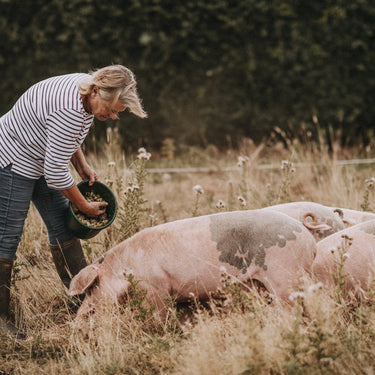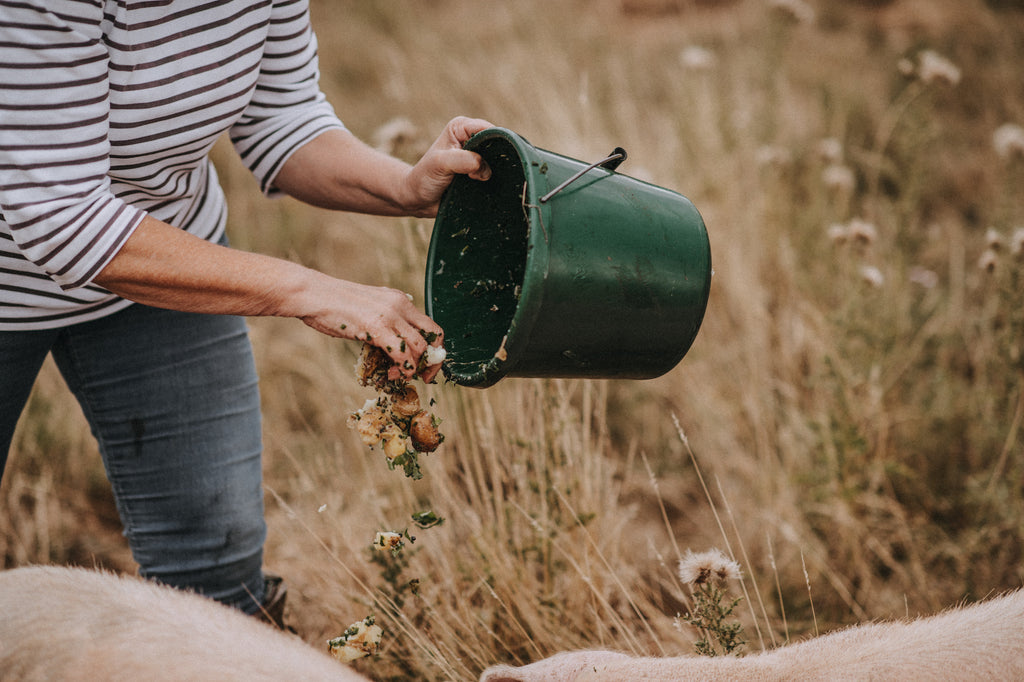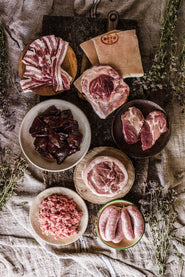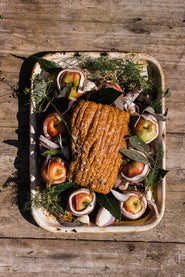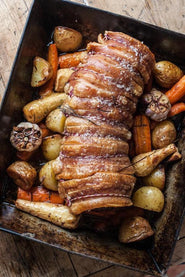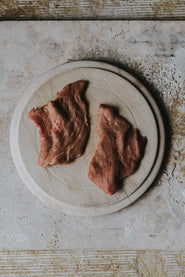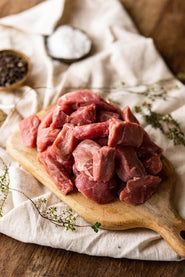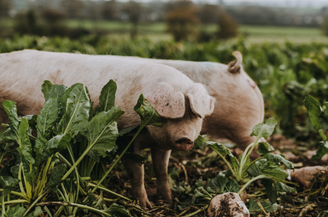Food waste is a global problem and a growing concern.
Over a third of all food produced globally goes to waste.
The UK alone throws away around 9.5 million tonnes of food waste in a single year.
But wasted food isn't just a social or humanitarian concern—it's an environmental one. When we waste food, we also waste all the energy and water it takes to grow, harvest, transport, and package it. If food goes to the landfill and rots, it produces methane—a greenhouse gas even more potent than carbon dioxide. About 6%-8% of all human-caused greenhouse gas emissions could be reduced if we stop wasting food. In the US, one of the largest net contributors of food waste, the production of wasted food generates the equivalent of 32.6 million cars’ worth of greenhouse gas emissions.
As the world’s population continues to grow, our challenge should not be how to grow more food, but to feed more people while wasting less of what we already produce.
Could feeding food waste to livestock be the answer?
The United Nations estimates that if farmers all around the world fed their livestock on the food we currently waste and on agricultural by-products, enough grain would be liberated to feed an extra three billion people, more than the additional number expected to be sharing our planet by 2050.
As Hugh Fearnley-Whittingstall points out;
"Pigs can be a highly effective recycling system, with the potential to turn a massive problem of food waste into a delicious solution."
For thousands of years pigs have been man’s perfect partner in consuming the waste that humans produce and converting it into healthy food i.e pork. Today supermarkets talk about composting food waste or turning it into electricity but by far the most efficient thing to do with food waste is to feed it directly to pigs.
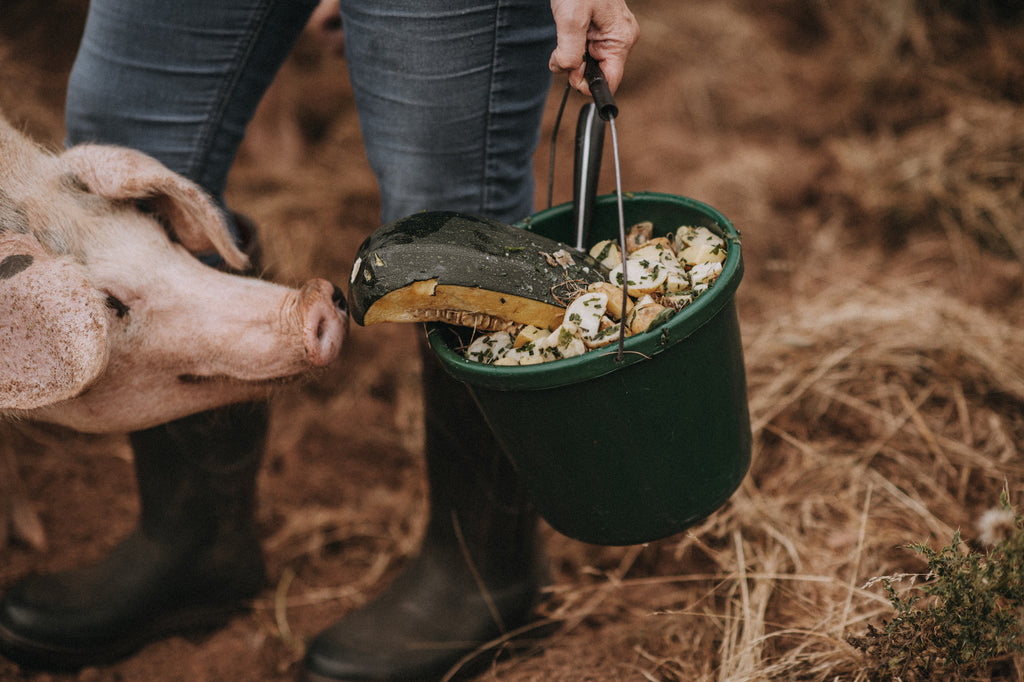
Instead we have a hugely inefficient system where pigs are being fed food that humans could otherwise eat, and much of this feed is soy, grown in places like the Amazon, where the rainforest is being cut down at an alarming rate. Europe now imports 40 million tonnes of soymeal a year for feeding livestock, including pigs. The amount of land needed to produce soy for the European market since the ban on feeding meat and bone meal is roughly equal to the area of deforestation in the Brazilian rainforest since that date.
The governments of other countries such as Japan recognise that the best way of turning food waste into a valuable resource is to feed it to livestock. Instead of banning the practice, the Japanese government support pig farmers who want to use food waste as feed. The resulting pork is sold at a premium as eco-pork on the same supermarket shelves from which the waste originated.
In the UK, thousands of British pig farmers have gone out of business because of increases in the price of wheat, maize and soy – the principal ingredients of most pig food. Returning to the practice of recycling food waste for livestock feed would be a way of increasing Europe’s food security for the future.
Quite a lot of the surplus food that wholesalers, manufacturers and retailers throw away can already be used for animal feed - there are plenty of good examples of food waste being used in this way, such; whey, spent brewers' yeast and bread. There are just a few conditions required, to make sure that this is hygienic and not contaminated with animal products.
One of our farms, for example, works with a local factory who produce packs of fruit and nuts that you find on supermarket shelves. Any fruit and nuts that are deemed not good enough for retailers are collected by Andrew and become part of our pigs rations. Our lucky pigs are often munching on macadamias or wolfing down walnuts.

There are other ways our ingenious Pipers Farm pig farmers reduce food waste. Some of our producers grow additional crops on farm as part of a 'mixed system', that once harvested leave behind edible roots and leftover vegetables, our pigs hoover up the bounty, whilst also ploughing and fertilising the field ready for the next crop. Rearing pigs like this provides one of the most sustainable ways of managing a mixed farm, minimising the use of machinery and inorganic fertilizers.

However, under current laws, feeding most food waste (such as catering waste) to pigs is banned and instead this mostly heads to landfill sites.
We are turning what could be a valuable natural resource – leftover food – into a huge environmental problem, by dumping it in landfill and leaving it to rot. Rotting food produces methane, which contributes to the devastating problem of climate change that is threatening us all. Waste food often also contaminates clean materials such as glass, plastic and cardboard that could otherwise be recycled. Keeping waste food out of landfill would help to reduce greenhouse gases and could increase our ability to recycle other materials.
Lifting the ban on catering waste and animal by-products which are currently illegal but which, given the correct heat treatment, would be absolutely safe for pigs to eat, could be a vital tool in rebalancing our food systems.
In a world where our natural resources are continually under threat, we believe it is appropriate to explore all alternatives to intensive agriculture. Food waste could be a ready-made energy source for livestock and provide other additional social benefits too.
